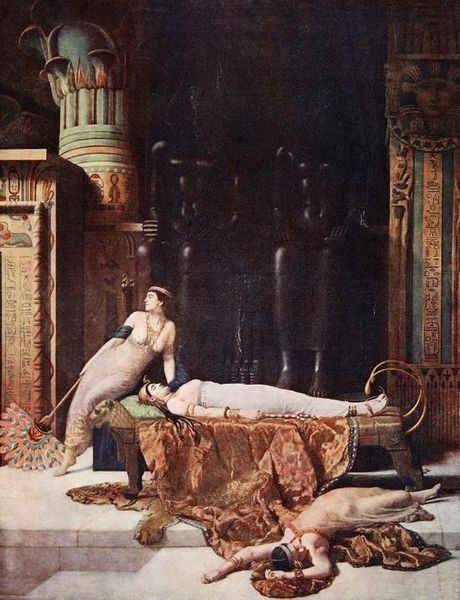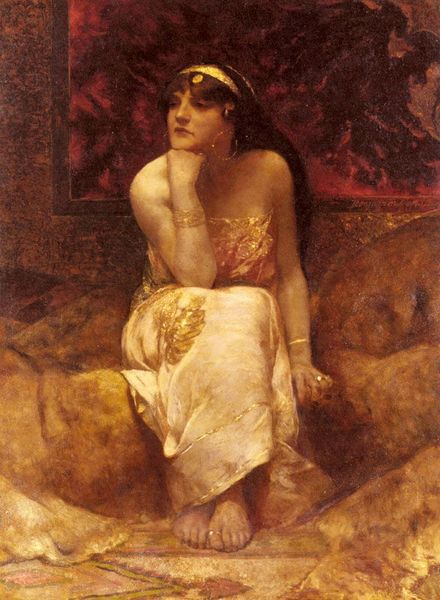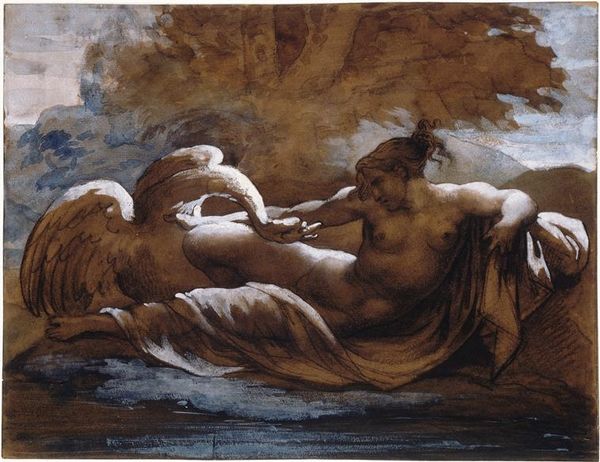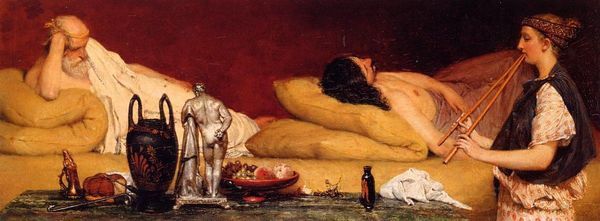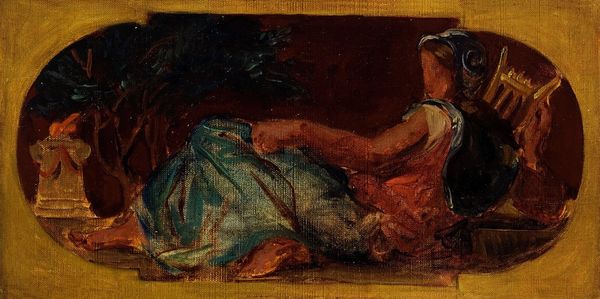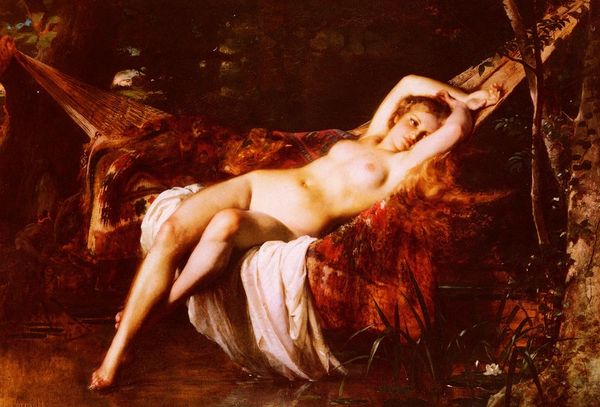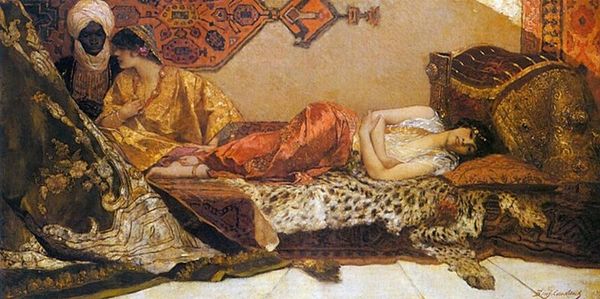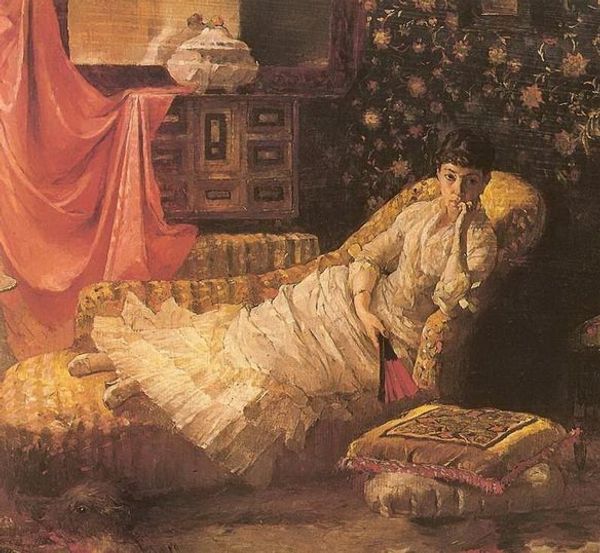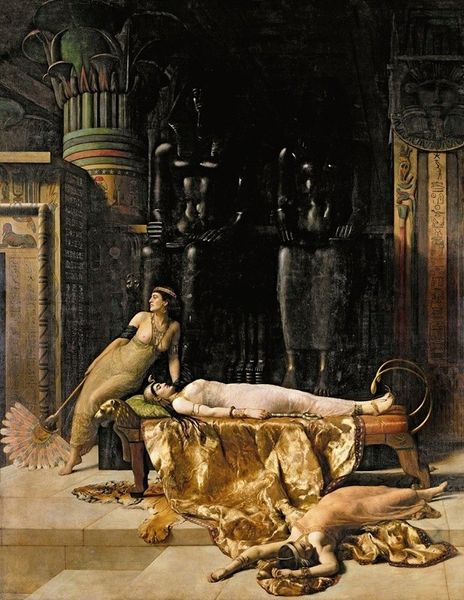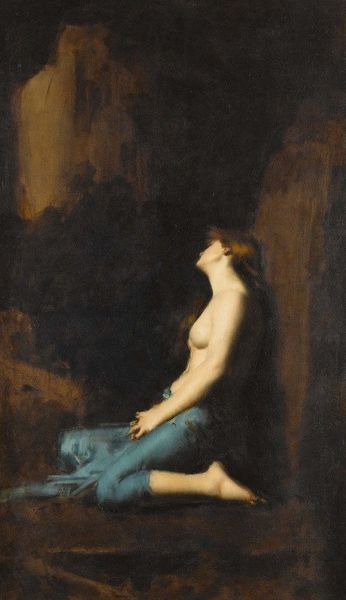
Cleopatra (69-30 BC), preparatory study for 'Cleopatra Testing Poisons on the Condemned Prisoners 1887
0:00
0:00
Copyright: Public domain
Editor: Here we have Alexandre Cabanel’s "Cleopatra (69-30 BC), preparatory study for 'Cleopatra Testing Poisons on the Condemned Prisoners'," painted in 1887 using oil paint and gouache. It's quite a sensual image, almost languid. What do you make of its representation of Cleopatra and its connection to Orientalism? Curator: Well, considering the painting's moment of creation within the late 19th century, it’s heavily influenced by the pervasive trends of Orientalism and Academic art. Think about it – the depiction of Cleopatra, a powerful historical figure, is reduced to a sensual, almost exoticized object. Her pose, the soft lighting, and even the imagined details of her costume contribute to a romanticized vision of the "Orient," a vision largely constructed for European audiences. How do you think this portrayal might serve the power dynamics of that era? Editor: It seems like it reinforces the idea of the "East" as a place of luxury and feminine allure, quite distinct from Western norms of power and femininity. Is it about possession or control, in a way? Curator: Precisely! The historical context is crucial here. European colonialism was at its height. Images like this one played a role in shaping public perception, reinforcing a sense of Western superiority and the right to dominate. Cabanel's skill is undeniable, but it also serves to legitimize a particular ideology. Did you notice the context it suggests for this image, linked to ‘Cleopatra Testing Poisons on the Condemned Prisoners'? Editor: Yes! It's like she is presented here with authority on life-and-death situations, though she seems detached. The gaze looks assertive. This makes a strong argument for Orientalism's manipulative ways in representing historical narratives! Curator: It certainly does. By critically examining such works, we expose the constructed nature of historical narratives and question whose perspectives are privileged and whose are silenced. Editor: I've definitely gained a broader insight. The painting is not just an artwork, but also a window into a complex historical and political context. Curator: Indeed. The politics of imagery were very strong then and it remains a relevant issue.
Comments
No comments
Be the first to comment and join the conversation on the ultimate creative platform.
